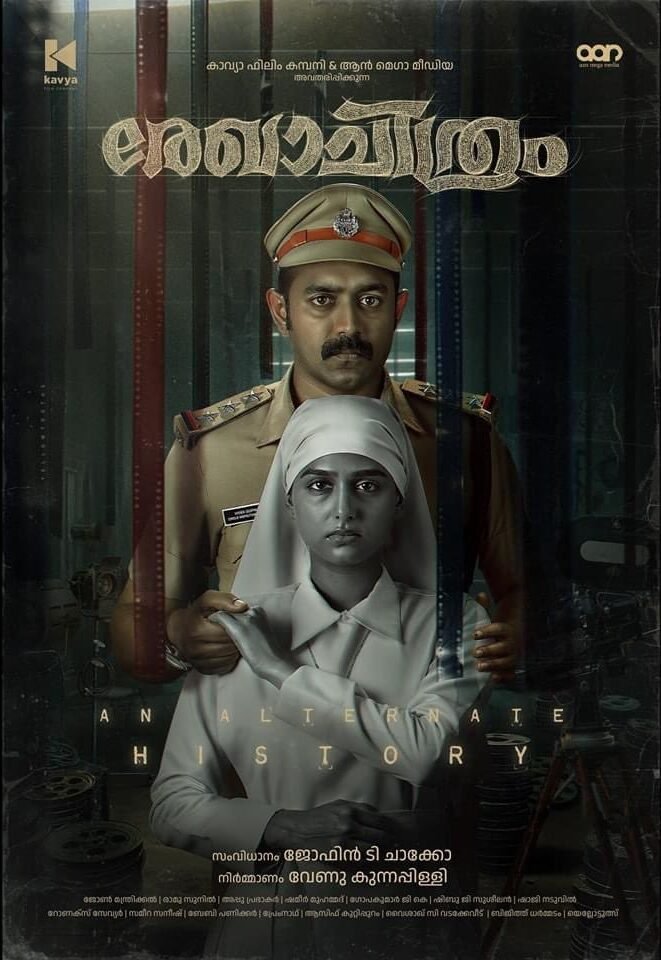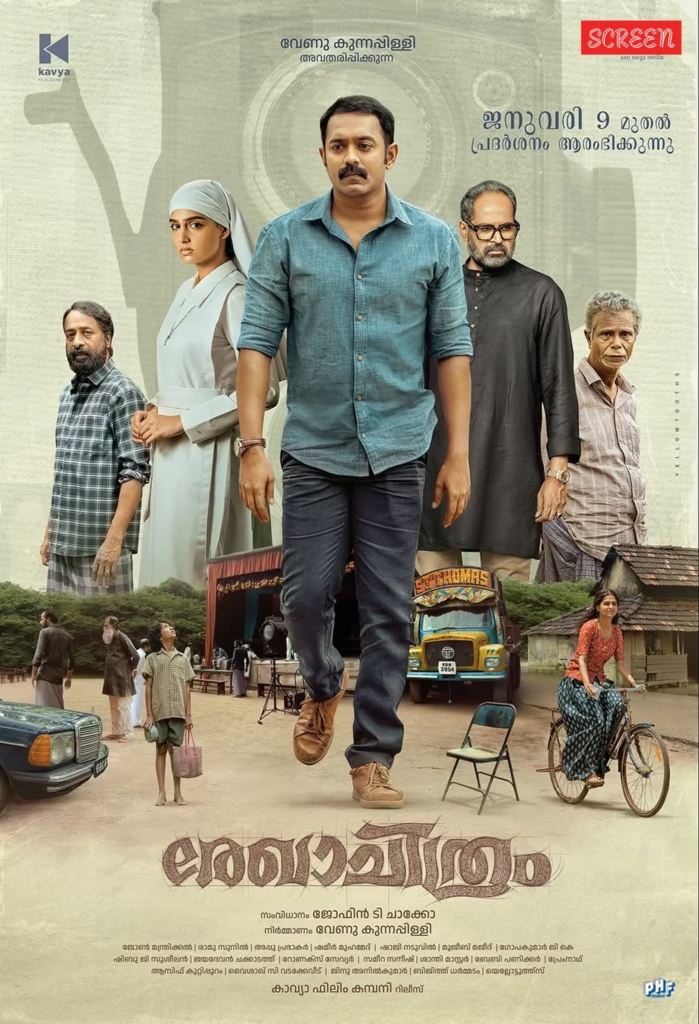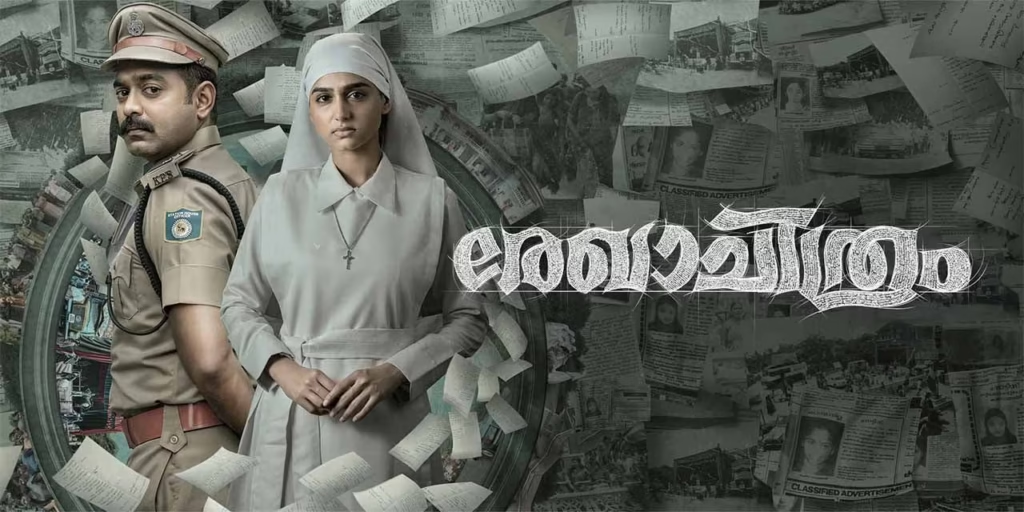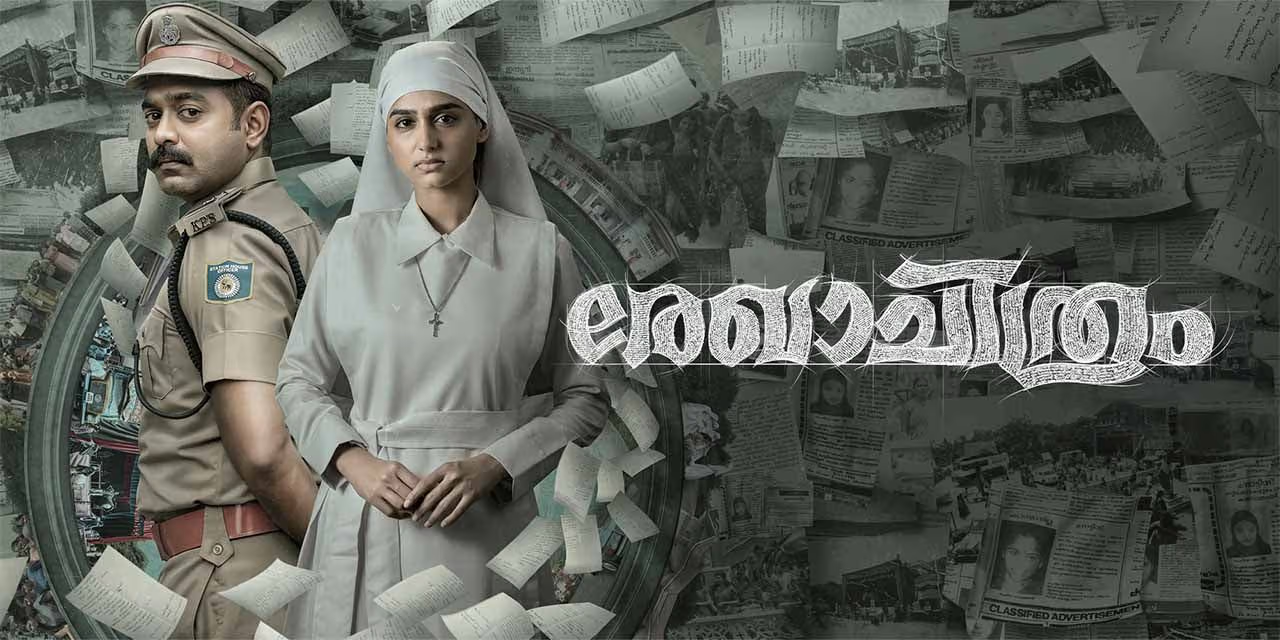Rekhachithram, only as a whodunit that starts with the finding of an unidentified body, is especially uninteresting. A dramatic climactic twist or suspense is not the purpose of the film. Still, nothing prepares you the way Rekhachithram takes you deep into a crime that happened so long ago, when Mammootty hadn’t yet become the megastar he is today. When Vivek Gopinath, a Kerala Police CI, played online rummy while on duty, he was suspended. Following his suspension, he was sent to a remote station in Malakkappara. The day he joined, however, a suicide case was recorded under the jurisdiction of his station, and because of the deceased, it was a noteworthy case. This film depicts Vivek’s inquiry into the relationship between this death and a missing case that was recorded in 1985.

This film has a direct connection to the 1985 Bharathan film Kathodu Kathoram, as was clear from the trailer and promotional interviews. To be honest, everyone who watched the film was curious about how Jofin and his writers, Ramu Sunil and John Manthrickal, attempted to incorporate that into the picture. The issue lies in the fact that the plot, from a screenplay perspective, lacks uniqueness. You wouldn’t feel as though you missed it once the truth about what happened was out, even if we couldn’t have predicted who was responsible. Sometimes the investigation’s beats lose their excitement, and during those times, the script gains a little momentum.The investigation’s beats become monotonous at times, and the storyline receives a tiny boost when something related to Kathodu Kathoram appears on screen.

The way the movie’s alternate past was handled was intriguing; a second track of alternate history seemed more thrilling than the much-discussed Kathodu Kathoram inclusion. That track actually provides us a better notion of the female character, and it considerably contributes to the film’s emotional high because the mystery element isn’t as unpredictable. To their credit, the dialogues—particularly those in the flashback scenes—have a very manufactured feel, and Jofin is unable to make the events more realistic even in the present. There’s an attempt to pay homage to a number of film icons that worked in the 1980s.

This film masterfully uses cinematic techniques, like tracking shots, to enhance the female protagonist’s journey and deepen emotional impact. The mystery element keeps viewers engaged, but contrived flashback dialogue occasionally disrupts the flow. This tension between artifice and authenticity reflects a homage to 1980s cinema, resulting in a film that blends nostalgia with emotional complexity, inviting reflection on character depth and narrative innovation.
Verdict: Watchable
